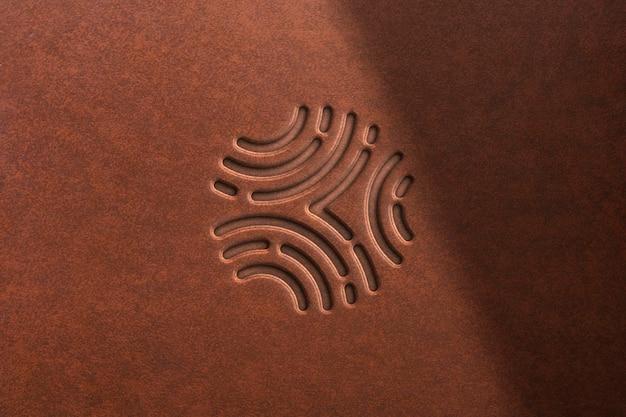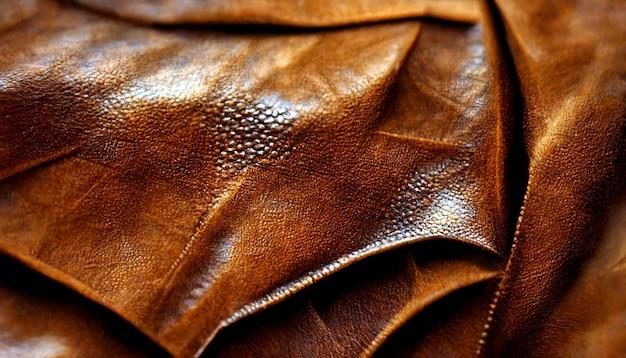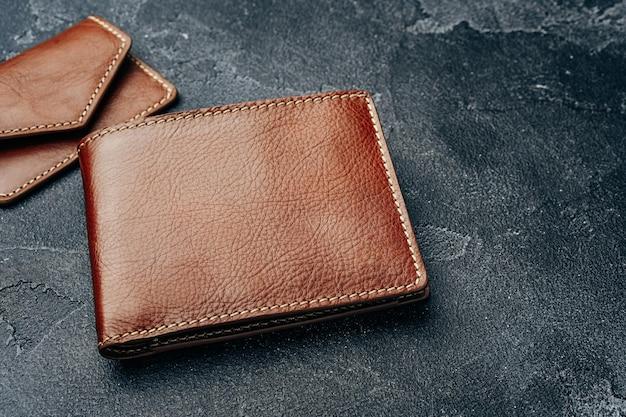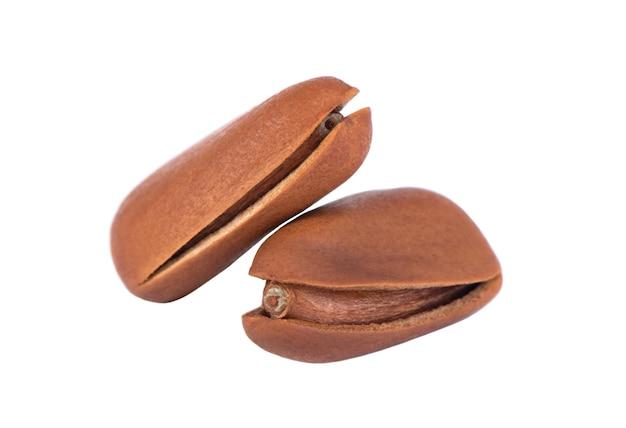Are you wondering if Pine Sol is safe and effective for cleaning leather furniture or car seats? Look no further! In this blog post, we will dive deep into the topic and provide you with all the information you need. From discussing whether Pine Sol can clean leather to suggesting the best cleaner for leather, we’ve got you covered. So, before you grab that bottle of Pine Sol, let’s find out what’s best for your leather goods!
Pine Sol on Leather: What You Need to Know
So, you accidentally spilled some Pine Sol on your beloved leather item. Don’t panic! While it may seem like a disaster waiting to happen, there are a few things you can do to minimize the damage and save your leather from any potential harm. Let’s dive into some key points on how to handle Pine Sol spills on leather and get your favorite leather goods looking fabulous again.
Understanding the Potential Risks
When Pine Sol comes into contact with leather, it can pose some risks. The harsh chemicals in Pine Sol can cause discoloration, drying out the leather, and even damaging the protective coating. It’s crucial to act quickly to prevent any permanent damage from occurring.
Quick Action is Key
If you spill Pine Sol on your leather item, time is of the essence. Grab a clean cloth or paper towel and gently blot the spill to remove as much of the liquid as possible. Remember, do not rub the leather vigorously as it could worsen the situation. Patience is a virtue – take your time and be gentle.
Testing a Hidden Area
Before proceeding with any leather treatment, it’s always best to test it on a hidden or inconspicuous area first. This step will ensure that the cleaning solution you use won’t cause additional damage or discoloration to your leather item. Safety first, folks!
Gentle Cleaning Solutions
Now that you’ve tested a hidden area and all seems well, it’s time to clean the affected area. Begin by mixing a mild soap solution with warm water. Grab a soft, clean cloth and dip it into the soapy mixture. Gently blot the affected area, moving in a circular motion. Once you’ve removed the Pine Sol residue, rinse the cloth with clean water and blot the area again to remove any soap residue.
Moisturizing the Leather
Pine Sol has a drying effect on leather, so after cleaning, it’s essential to restore moisture to the area. Grab a clean, dry cloth and apply a leather conditioner or a small amount of coconut oil to help replenish the lost moisture. Massage it gently into the leather using circular motions, then allow it to air dry.
Prevention is Better Than Cure
To prevent future Pine Sol mishaps, it’s best to keep cleaners away from your leather items. Store them in a secure place, out of reach from any cleaning frenzy. Remember, prevention is always easier than dealing with the aftermath!
Wrapping It Up
Accidents happen, but with quick thinking and gentle actions, you can salvage your leather item from the clutches of Pine Sol. Remember to act swiftly, test your cleaners, and moisturize the leather afterward. And above all, keep those cleaning products at a safe distance. Now go forth, armed with the knowledge to tackle any Pine Sol spill with confidence!
Can Pine-Sol Clean Leather
Can Pine-Sol Be Trusted to Clean Your Leather Goods
When it comes to cleaning leather, you might be wondering if good ol’ Pine-Sol can handle the job. Well, hold on to your leather boots, because we’re about to find out!
Let’s Get Down to the Nitty-Gritty
Okay, so imagine this scenario: you accidentally spill coffee on your favorite leather jacket. Panic sets in, and you start frantically searching for a solution. Then, it hits you like a ray of sunshine on a summer day – Pine-Sol! But before you go ahead and give it a try, let’s consider a few things.
Is Pine-Sol Gentle Enough for Leather
Leather is a delicate material that requires some TLC. You don’t want to use something too harsh that could potentially damage your precious leather goods. While Pine-Sol is a powerful cleaning agent, it might be a bit too aggressive for your beloved leather items. The chemicals in Pine-Sol can strip away the natural oils in the leather, leaving it dry and prone to cracking.
The Safer Alternative: Specialized Leather Cleaners
If you’re looking to give your leather a proper clean, it’s always best to use specialized leather cleaners. These products are designed specifically to remove dirt and stains from leather while keeping it in top-notch condition. Plus, they contain ingredients that rejuvenate and moisturize the leather, preventing it from losing its luster.
The Dos and Don’ts of Cleaning Leather
Before you go ahead and attack your leather goods with Pine-Sol or any other cleaning agent, here are some guidelines to follow:
Do:
- Read the care instructions provided by the manufacturer of your leather item.
- Test the cleaner on a small, inconspicuous spot first to ensure it doesn’t cause any adverse reactions.
- Gently blot or wipe away stains instead of rubbing vigorously, as this can cause damage.
- Allow the leather to air dry naturally and avoid using heat sources like hairdryers.
Don’t:
- Use abrasive tools or scrub brushes that could scratch the leather.
- Use strong detergents or solvents, like Pine-Sol, that can strip away the leather’s natural oils.
- Soak the leather or immerse it in water, as this can cause it to warp or lose its shape.
- Ignore stains or spillages for too long – address them as soon as possible for the best chance of successful removal.
Keeping It Clean and Classy
Ultimately, when it comes to maintaining the beauty and longevity of your leather goods, it’s best to opt for specialized leather cleaners rather than using Pine-Sol or other household cleaning products. By showing your leather some love and using the right products, you’ll keep it looking sharp and stylish for years to come. So, give your leather the treatment it deserves, and let Pine-Sol stick to what it knows best – tackling dirty floors!
Is Pine-Sol a Good Option for Cleaning Leather
When it comes to cleaning leather, finding the right products can be a bit tricky. One popular household cleaner that may come to mind is Pine-Sol. But is Pine-Sol a good option for cleaning your precious leather items? Let’s dive into it and find out.
The Power of Pine-Sol: Pros and Cons
Pine-Sol is known for its powerful cleaning capabilities and signature scent. However, when it comes to leather, we need to consider a few factors before reaching for the trusty yellow bottle.
Effectiveness on Stains and Dirt
Pine-Sol does a decent job of removing general stains and dirt from various surfaces. The same holds true for leather. It can effectively tackle light stains and fresh dirt that may have found their way onto your beloved leather goods.
A Cautionary Tale: Potential Risks
While Pine-Sol can work effectively on some types of stains, it may not be suitable for all types of leather. It is crucial to proceed with caution, as using Pine-Sol on delicate or unfinished leather can lead to discoloration or damage. It is always wise to test it on a small, inconspicuous area before using it on the entire surface.
Best Practices for Using Pine-Sol on Leather
If you’ve determined that Pine-Sol can safely be used on your leather item, here are a few tips to ensure the best possible outcome:
Dilute It!
To minimize the risk of damage, it is advisable to dilute Pine-Sol with water. Use a ratio of 1 part Pine-Sol to 3 parts water. This will help ensure it is not too harsh on your leather, while still allowing it to effectively clean.
Gentle Circular Motions
When applying the Pine-Sol solution, use a soft cloth or sponge and gently rub in circular motions. This will help loosen any dirt or stains without causing excessive friction or damage to the leather surface.
Rinse and Dry
After cleaning your leather with Pine-Sol, use a clean, damp cloth to rinse off any residual cleaner. Then, dry the leather thoroughly with a soft towel to prevent any moisture from seeping in and causing damage.
While Pine-Sol can be effective in cleaning certain types of leather, it’s crucial to exercise caution and always test it on a small, hidden area first. Diluting the solution, using gentle circular motions, and ensuring thorough rinsing and drying are key to minimizing potential risks. Remember, every leather item is unique, and caring for it properly will help ensure its longevity and beauty for years to come.
Disinfecting Your Leather Couch with Pine Sol
Introduction
As much as we adore our furry friends and the cozy movie nights on our leather couches, they can sometimes leave behind unwanted germs and odors. Fear not! With a little help from Pine Sol, you can easily disinfect your beloved leather couch and keep it looking and smelling fresh. In this guide, we’ll walk you through the simple steps to disinfect your leather couch effectively.
Prepare Your Cleaning Solution
Before you embark on your leather-cleaning adventure, make sure you have the right cleaning solution ready. Now, you might be wondering, “Can I use Pine Sol on leather?” The answer is a resounding “yes!” Pine Sol is gentle enough to use on leather but still tough on germs. Create a solution by mixing one part Pine Sol with two parts warm water in a bucket.
Testing, Testing!
Before applying the solution on your entire leather couch, it’s essential to do a patch test. Choose an inconspicuous area, like the back of the couch or the underside of a cushion, and apply a small amount of the solution. After a few minutes, gently wipe the area with a clean cloth. If there’s no discoloration or damage, then you’re good to go!
Time to Get Rid of Those Germs
Now that you’ve tested the solution, it’s time to tackle the germs on your leather couch. Dip a soft cloth or sponge into the Pine Sol solution and wring out any excess liquid. You don’t want to soak your leather couch as excess moisture can damage it.
Wipe Away the Dirt and Grime
Starting from the top of your couch, gently wipe the leather surface with the damp cloth or sponge, making sure to cover all areas. Pay extra attention to any visible stains or spills. Pine Sol not only disinfects but also helps dissolve stubborn grime. You’ll be amazed at how quickly it cuts through dirt and leaves your leather looking good as new!
Let It Dry
Once you’ve thoroughly wiped down your leather couch, allow it to air dry naturally. Avoid using heat sources or direct sunlight, as they can cause the leather to crack or fade. Patience is key here, so resist the temptation to plop down and enjoy the couch just yet!
Seal the Deal
To protect the leather and keep it looking shiny and supple, consider applying a leather conditioner after it has dried completely. This will help prolong the life of your leather couch and ensure it stays in tip-top condition for years to come.
With Pine Sol by your side, you can confidently disinfect your leather couch and bid farewell to germs and unpleasant odors. Remember to always do a patch test, use a gentle cloth or sponge, and let your couch air dry. So go ahead, relax, and enjoy your sparkling clean and germ-free leather couch. Cheers to a fresh and cozy living space!
What Cleaner is Safe for Leather
Leather is a luxurious material that adds a touch of elegance to any space. Whether it’s a leather sofa, jacket, or handbag, it’s important to keep it clean and well-maintained. However, with so many different cleaning products on the market, it can be overwhelming to know which one is safe for leather. Don’t worry, we’ve got you covered. In this section, we will explore some of the best cleaners that are safe for your beloved leather items.
Gentle Soap and Water: A Classic Combo
When it comes to cleaning leather, sometimes the simplest solutions are the best. One of the safest and most effective ways to clean leather is by using a gentle soap and water mixture. Start by mixing a few drops of mild liquid soap with warm water until it forms a soapy solution. Dip a soft cloth or sponge into the mixture, wring out any excess liquid, and gently wipe down the leather surface. Remember to avoid using too much water, as excessive moisture can damage the leather. Once you’re done, use a clean, damp cloth to remove any soap residue, and let the leather dry naturally.
White Vinegar: The Multi-purpose Wonder
White vinegar is not only a kitchen staple but also a fantastic cleaner for leather. Mix equal parts of white vinegar and water in a spray bottle, and lightly mist the solution onto a soft cloth. Gently wipe the leather surface, focusing on any stains or spills. The acidity of the vinegar helps remove grime and restores the leather’s natural shine. However, be cautious not to oversaturate the leather and always perform a patch test in an inconspicuous area before applying it to the entire surface.
Natural Oils: A Nourishing Treat
For leather items that need a little extra TLC, natural oils can work wonders. A popular choice is coconut oil, which not only cleans the leather but also conditions and moisturizes it. Simply apply a small amount of coconut oil onto a soft cloth and gently rub it onto the leather in a circular motion. This method not only removes dirt and stains but also helps prevent cracking and drying out. However, keep in mind that natural oils can darken certain types of leather, so always test it on a small, hidden area first.
Leather Conditioners: The Professional Touch
When it comes to maintaining the supple feel of your leather items, a good leather conditioner is essential. Look for a conditioner specifically designed for leather, preferably with natural ingredients. Apply a small amount to a clean cloth and gently massage it into the leather in a circular motion. This not only helps clean the leather but also restores its moisture and protects it from future damage. Regular conditioning can extend the life of your leather items and keep them looking their best.
In conclusion, using gentle soap and water, white vinegar, natural oils, and leather conditioners are safe and effective ways to clean your leather items. Remember to always test any cleaning product in a small, inconspicuous area first, and follow the manufacturer’s instructions. With proper care and maintenance, your leather items will continue to impress with their timeless beauty and durability. Happy cleaning!
Can You Use Pine Sol on Car Seats
Introduction
If you’re someone who takes pride in keeping your car clean and fresh, you’ve probably considered using Pine Sol as a cleaning solution. While Pine Sol is a popular choice for household cleaning, you may wonder if it’s safe to use on your car seats. In this section, we’ll explore whether Pine Sol is suitable for cleaning car seats and share some tips to help you keep your car seats in top condition.
Understanding Pine Sol
Before we dive into the specifics of using Pine Sol on car seats, let’s first understand what Pine Sol is. Pine Sol is a brand of all-purpose cleaner that is known for its fresh pine scent. It contains pine oil, surfactants, and other ingredients that make it an effective cleaner for various surfaces. However, it’s important to note that Pine Sol is not specifically formulated for car upholstery.
Can You Use Pine Sol on Car Seats
While Pine Sol may be safe to use on some surfaces, it’s generally not recommended to use it directly on car seats. Car seats are typically made of different materials like leather, fabric, or synthetic materials, each requiring specific care. The strong cleaning properties of Pine Sol can potentially damage or discolor the delicate surfaces of car seats, especially if they’re made of leather.
Alternative Options for Car Seat Cleaning
Instead of using Pine Sol, it’s best to opt for cleaning products that are specifically designed for car seat upholstery. Look for cleaners that are labeled safe for use on leather or fabric car seats. These cleaners are formulated to effectively remove stains, dirt, and grime while being gentle on the material.
Another option is to make a homemade cleaning solution using mild dish soap and warm water. This mixture can be used to gently clean car seats without causing any harm. Make sure to test the solution on a small, inconspicuous area of the car seat first to ensure it doesn’t cause any discoloration or damage.
General Tips for Car Seat Maintenance
Keeping your car seats clean and well-maintained extends their lifespan and enhances the overall appearance of your car’s interior. Here are some general tips to help you maintain your car seats:
- Regularly vacuum your car seats to remove dirt, crumbs, and debris.
- Immediately address any spills or stains by blotting them with a clean cloth or paper towel.
- Avoid using harsh cleaning products or abrasive materials that can damage the upholstery.
- Use seat covers or protective mats to prevent wear and tear, especially in high-traffic areas.
While Pine Sol is a versatile cleaner, it’s best to steer clear of using it directly on your car seats. Opt for car seat cleaners that are specifically formulated for the material of your seats. By following the right cleaning methods and practices, you can keep your car seats looking fresh and well-maintained for years to come.
What is the Best Way to Treat Leather
Leather is a beautiful and luxurious material that adds a touch of class to any space. Whether it’s a sleek leather sofa or a stylish pair of boots, maintaining the quality of leather is essential to make it last for years. In this section, we will explore the best methods to treat leather and keep it looking its best.
1. Keep it Clean
To maintain the pristine condition of your leather items, regular cleaning is crucial. But what’s the best way to do it? Well, fear not, I’ve got you covered! Start by using a soft, damp cloth or sponge to gently wipe away any dirt or spills. Avoid using harsh chemicals or abrasive materials, as they can damage the leather. Instead, opt for a mild soap or leather cleaner specifically designed for the purpose.
2. Condition for Success
Leather, like our skin, needs moisture to stay supple and prevent cracking. That’s where leather conditioners come into play! These magical potions rejuvenate the leather and restore its natural oils, leaving it soft and shiny. Look for a high-quality leather conditioner that matches the type and color of your leather. Apply it evenly with a clean cloth, massaging it into the leather in circular motions. Let it work its magic, and voila! Your leather will thank you.
3. Protect and Serve
Prevention is better than cure, and the same goes for leather. By applying a leather protector, you create a shield against spills, stains, and fading. These protectors work wonders by forming a protective barrier that repels liquids and prevents them from seeping into the leather. Simply spray the protector evenly on the leather surface and let it dry. It’s like giving your leather a superhero cape!
4. Avoid Extremes
Leather may be tough, but it has its limits. It prefers to be in an environment that is not too hot, not too cold, but just right. Avoid placing leather furniture or items in direct sunlight or near heat sources like radiators. Excessive heat can cause the leather to dry out and crack, while extreme cold can make it stiff and prone to damage. So, keep it away from Goldilocks’ extremes to preserve its beauty.
5. TLC (Tender Leather Care)
Lastly, show your leather some love and care. Regularly dusting off your leather items with a soft cloth helps to keep them free from dirt and grime. Also, make sure to address any spills or stains promptly by blotting them gently with a clean cloth. The quicker you attend to the problem, the better chance you have of preventing permanent damage.
In conclusion, treating leather is all about dedicating some time and effort to keep it in the best condition possible. By following these simple steps, you can ensure that your leather items remain as exquisite as the day you brought them home. So, go ahead and give your leather the TLC it deserves.



